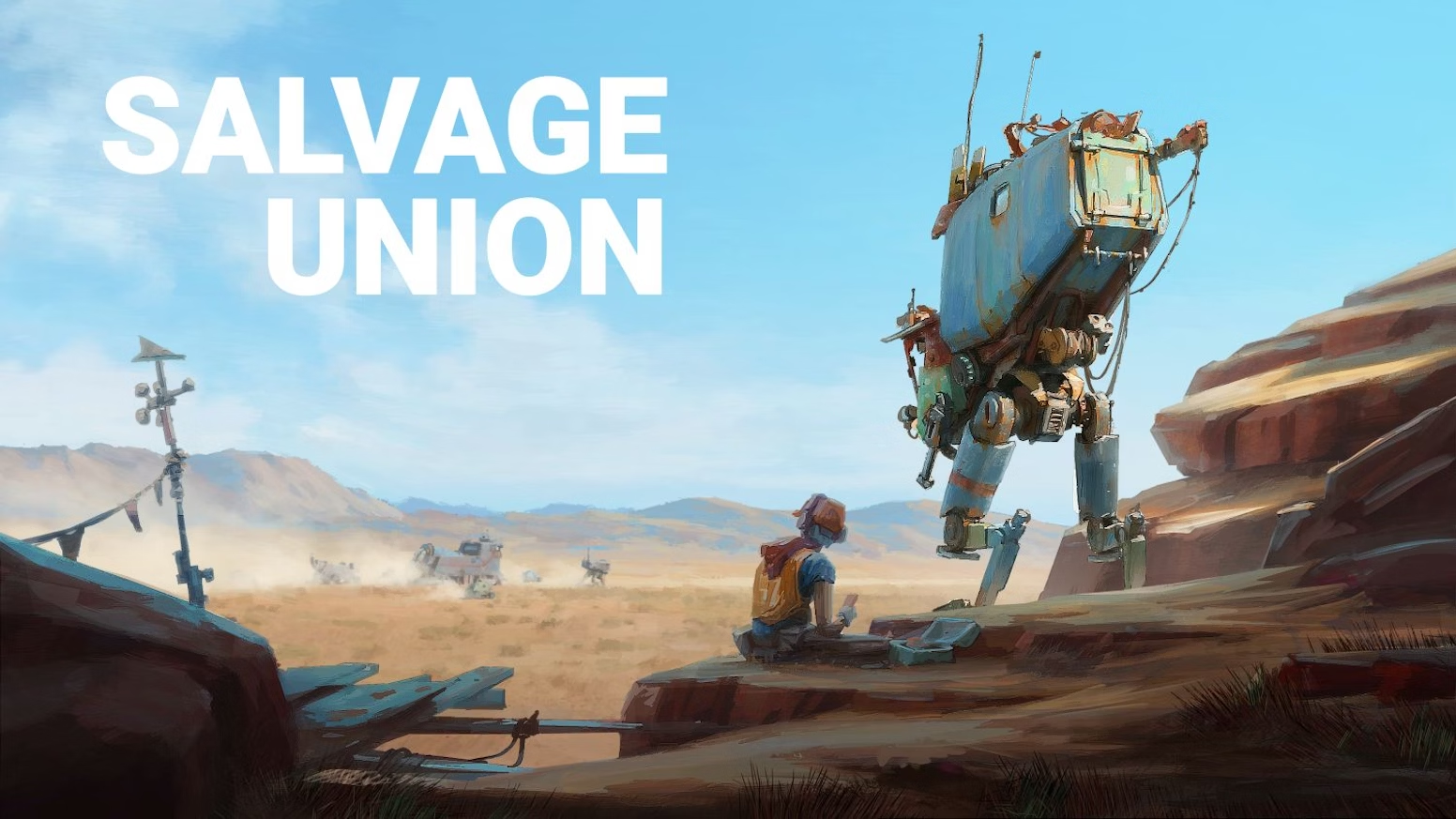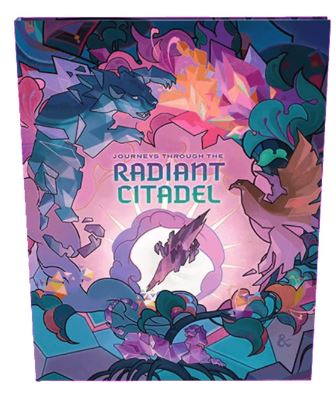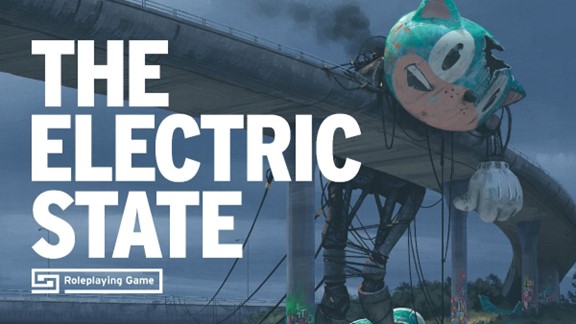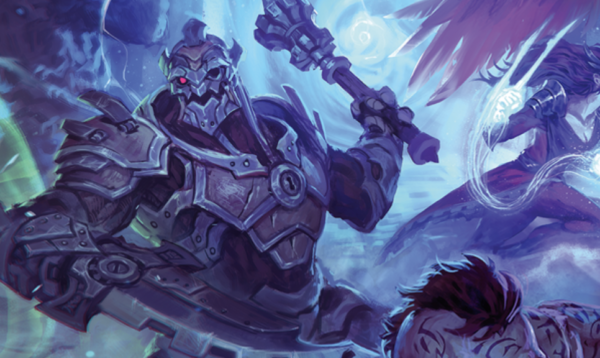
Mecha are typically portrayed in a military setting. They can be kings that stride the battlefield, hot fighter craft that streak though the emptiness of space or, in some cases, a little of both. Salvage Union, from designers Aled Lawlor and Panayiotis Lines, fit these robots into a more utilitarian role somewhere between pick-up trucks and long haul 18-wheelers.There’s still plenty of battles, but there’s also exploration, intrigue and tons of piles of junk to sift through. Leyline Press sent me a copy of the game along with three sandbox campaigns funded by a recent Kickstarter. Did the game come together as more than a bucket of bolts? Let’s play to find out.
Salvage Union is set on an unnamed, Earth-like planet sometime in the future. Much of humanity lives in corporate arcologies with the ultra-rich in control of their lives. The rest of the world is a blasted wasteland full of feral Mad Max-style wastelanders, giant mutant bio-titans and massive amounts of scrap waiting to be recycled into useful machinery. The players play the working class heroes in charge of bringing this scrap home to their massive Union Crawler to sell back to the corporations, trade with other scrappers and use to build new mechs with cooler weapons and systems to use in the field.
These sorts of games can live or die on their mecha designs and I love what Leyline Press has done here. The whole book has the look of a maintenance manual complete with notes scribbled in the margins, redactions, and mech manufacturer stickers placed in weird places. Each mech comes with a fantastic line drawing that includes three variations, called patterns, that can be used as the basis for player creation. The book functions well as an in game artifact and as a rules book, thanks to the end papers which contain short rules summaries and reference to important rules scribbled like mechanics notes.
Character creation spans three levels. Players make their pilot, their first mech and the crawler that they call home. All these are assembled from feat-like character abilities. Some of them are passive while others use an action point system for their cost. Pilots are built out of specific classes, though a sixth, the Salvager, allows the character to dip into the basic abilities of every class. Players can choose to take abilities from related classes while eventually progressing to a legendary capstone ability. Mechs are a bit more modular with players able to construct new weapons, systems and gadgets from the scrap they find in the wastes. There’s a little old school sensibility in treasure turning directly into new abilities and it also puts a spin on the leveling process. Do you save up to build a better mech overall, or do you improve your current mech piece by piece for better abilities right now?
The system at the center of the game is based on the Quest RPG and it makes some choices that veteran gamers might take some getting used to. When the time comes to take a risky action, the player makes a d20 roll and consults a success chart that interprets the results in a Powered By The Apocalypse way: critical success, regular success, success with complication, regular failure and critical failure. There are very few abilities that modify the roll. Instead, rerolls offer a chance to save face. This includes attacks during combat, which means that a success with complication might mean that the player takes damage from an enemy outside of their turn. Fans expecting a tactical game like Battletech might bristle against the more anime-style cinematic combats that await when these mechs throw down.
The world feels similarly scrappy, leaning more toward things like Firefly or Borderlands in the general vibe of the game. Groups are encouraged to use the bits of info included in the book as they see fit to build their own harsh world for these adventures. There is some excellent guidance in how to build a campaign map that mirrors these layers of character. Start with a campaign map, mark off a few regions and then areas within those regions that explore the theme.Is there a tyrant that runs the place? Are they a slick corpo or a wild warlord? Who can the players ally with to neutralize their threat? In just a few short pages the game helps players give life to their dusty wasteland with a setting to explore.
The three campaigns Leyline Press sent along stand out as excellent examples. My personal favorite was Rainmaker, which showed how different regions can change the mechanics of the game and also has a somewhat noble bent for the ultimate salvage prize at the end of the story. False Flag drops the players into a Cold War style struggle between two corpos and the strange technology they are fighting for control. We Were Here First puts players at the head of a gold rush, if gold was a strange meteorite that emitted weird radiation that mutated flesh and technology in equal measure. All three books offer new mechs, adversaries and story ideas and should be the next stop for anyone who enjoys this game.
Salvage Union puts building mechs at the heart of its story to tell tales of blue collar folks trying to make ends meet after the world ends.








